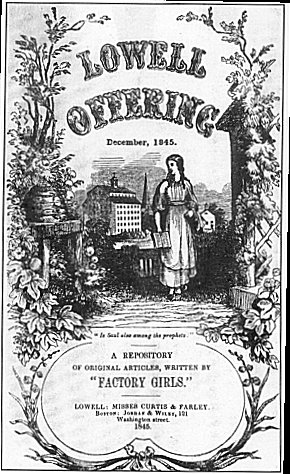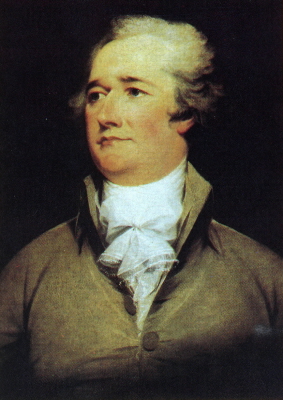The Market Revolution

History 2700 MacKay
The Market Revolution

Ours is a country where men start from a humble origin . . . and where they can attain the most elevated positions, or acquire a large amount of wealth, according to the pursuits they elect for themselves. No exclusive privileges of birth, no entailment of estates, no civil or political disqualification, stand in their path; but one has as good a chance as another, according to his talents, prudence, and personal exertions. This is a country of self-made men . . . . Calvin Colton, 1844
Oh! isn't it a pity, such a pretty girl as I
Should be sent to the factory to pine away and die?
Oh! I cannot be a slave, I will not be a slave,
For I'm so fond of liberty,
That I cannot be a slave....Song Lyrics sung by protesting workers at Lowell, 1836
The changes from subsistence-oriented, farming economy to market, industrial economy include:
a. Rise of Market: Dual economies exist--a staple- exporting seaboard economy combined with inland subsistence-oriented farming communities. Subsistence-oriented farming characterizes inland U.S. in regions beyond fall line of rivers and outside about a 20-mile radius where no roads or water provide transportation to town markets with a non-agricultural populations. Economy is based on use-values; labor is exchanged for food, goods, services, or "cash if required." After 1815 concurrent and mutually stimulated transportation (turnpikes, canals, steamboats and railroads) and market revolutions (ca. 1815-50) create national market system in U.S. interior, bringing about dramatic decreases in shipment time and costs (Example: Shipping goods from Cincinnati to New York took 50 days in 1815 at 30-70 cents per ton-mile. The same trip took 6-8 days via R.R. in 1850 at 2-9 cents per ton-mile.) A profit-oriented money-value economy with production specialization emerges. Market revolution marks the transition between the staple-exporting mercantile economy of the colonial period and the industrial revolution of the mid-nineteenth century.
b. Population: Population pressure on land stimulates gradual inland migration, 1750-1800, creating agrarian, subsistence-oriented economy. Ninety percent of inhabitants of southern New England (for example) are subsistence-oriented farmers living in inland towns. Sixty-seven percent live in townships (40 square miles) of 1,000-2,000 people. Only 3 out 437 townships have more than 10,000 inhabitants. Average farm covers 100-200 acres. After 1815, population pressure coupled with market revolution and resolution of Indian lands stimulates great migration to Mississippi and Ohio valleys, with clearing of new lands.
c. Social Relations: Subsistence
farming regions exhibit little social stratification and lack economic
specialization. They show greater equality in wealth distribution than do
seaboard areas, owing to absence of non-agricultural markets. Social
stratification is based primarily on age-stratification. Tools are shared and
labor is exchanged. Non-agricultural communities that develop in same regions
after market revolution exhibit wider range of stratification and specialization
patterns.
d. Attitudes: Crèvecoeur in Pennsylvania and New
York (1782) and Jefferson in Virginia (1787) idealize the subsistence farmer as
the backbone of the democratic agrarian-based economy. Post market-revolution
commentators such as Calvin Colton (1844) eulogize the "self-made man"
and "his" ability to accumulate wealth and profit through hard work,
industry, and merit, achieved through the "inexhaustible wealth" of
the country's seemingly limitless abundance of natural resources.
 Alexander
Hamilton: Aide to camp for Washington during Revolution; delegate to
Constitutional Convention, principle writer of Federalist papers, Secretary of
Treasury, 1789-1795; killed in duel 1804.
Alexander
Hamilton: Aide to camp for Washington during Revolution; delegate to
Constitutional Convention, principle writer of Federalist papers, Secretary of
Treasury, 1789-1795; killed in duel 1804.
HAMILTON'S PROPOSALS FOR ESTABLISHING ECONOMIC STABILITY IN THE NEW NATION
1. Fund the $54,124,465 national debt by paying off federal certificates at face value. Hamilton wanted to insure that the credit of the U.S. would be respected in Europe, and that the people who had bought federal notes were rewarded for their loyalty to the new government. He also wanted the wealthy to see the success of the new government as paramount to their own success. Opposition to this plan came from those people who believed that the original recipients of the government notes, not speculators, should receive the government payments. Many Revolutionary War veterans, and the widows and orphans of veterans, had sold their government notes to speculators for cash.
2. The national government would take over the state Revolutionary War debts thereby tying both the states and their citizens to the national government. Virginia, and all the southern states except South Carolina, had already paid off their war debt. To get Virginia (the most important southern state) to support this plan, the nation's capital was put on its northern border near George Washington's home.
3. A national bank was created to stabilize the currency. Southern and western farmers tended to disagree with this plan, because they wanted an inflated currency and they feared that the bank would be controlled by eastern capital. Northern bankers, merchants, and lawyers tended to agree with this plan.
4. A protective tariff would protect "infant" American industry and encourage the development of American manufacturing.
Subsistence Economy- the products are made not for sale but for consumption inside of economically closed producing unit (the family, the community); it is opposite the market economy, where the products of work are intended for sale in the market.
Capitalist Economy- From the 18th century to the present. Capitalism is based on the same principle as mercantilism: the large-scale realization of a profit by acquiring goods for lower prices than one sells them. But capitalism as a practice is characterized by the following:
Differences between subsistence and capitalist economic systems:
| Subsistence Production | Commercial Production |
|
|
Cultural changes as part of developing market economy:
- Demographic pressures
- Widespread geographic mobility
- Rapid environmental change
- Government support of markets/business
--"transportation revolution"- Market expansion: geographic & substantive
- Reorganization of work
- Reorganization of the family/ gender roles
- “Progress” vs. “Defense of Liberty”
Diverging Cultures: North & South
- Growth of a market economy widens cultural and economic gap between regions
- North = commercial culture; commodity farming; early industrialization
- South = non-industrial; two forms of pre-modern agriculture: 1) Planter/slave 2) subsistence
- Differences continue to widen until secession and Civil War
Communitarianism is an economic system which emphasizes community over individualism. Active communities support their own members, engage in 'moral dialogues' that define and redefine important values, and enforce community standards through the weight of a shared moral culture.
Readings:
Project #12:
Choose one: